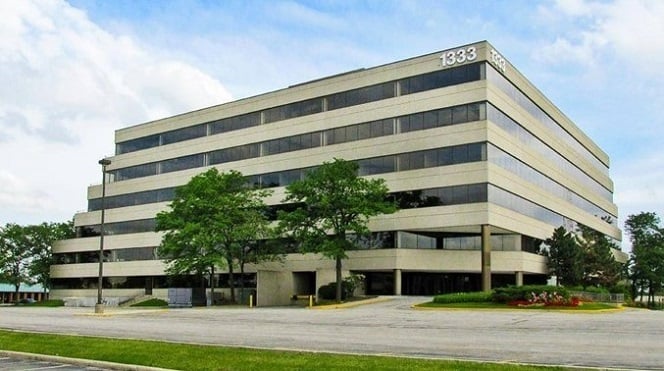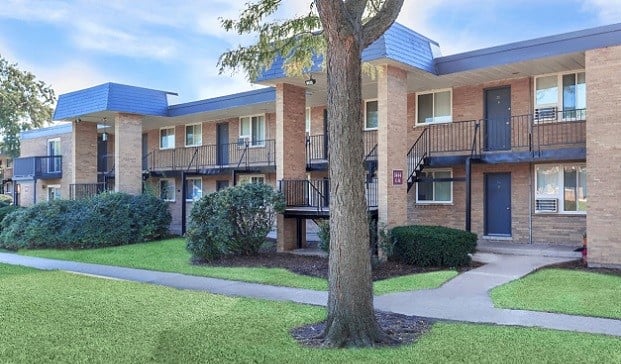 Deloitte's report cites the collaboration between Tishman Speyer, Autodesk and Steelblue to create one of the largest-ever scale models of San Francisco, using 3D printing. (Photo: Autodesk)
Deloitte's report cites the collaboration between Tishman Speyer, Autodesk and Steelblue to create one of the largest-ever scale models of San Francisco, using 3D printing. (Photo: Autodesk)
CHICAGO—The future of commercial real estate is bound up with its adoption of technology on a macro scale, i.e. fitting in with the “smart city” concept now on the radar of urban policy makers, Deloitte says in a new report. Urban planners are responding to the “significant demographic shifts” underway, as well as the issues of “security, climate change and resource scarcity concerns” that are pressuring government budgets and the physical infrastructure.
“Naturally, the built environment plays a pivotal role and is an integral part of urban planning,” according to Deloitte's report, titled “Innovations in Commercial Real Estate: Preparing for the City of the Future.” Given the forwarding-looking focus, the report says, “the question you need to ask yourself is: as developers and owners of the built environment, are your buildings future ready? Are you deploying technology innovatively and effectively to prepare and respond to the rapidly changing ecosystem?”
Deloitte's report notes that many commercial property owners might view “cities of the future” as a concept too far ahead on the horizon to make an impact on existing building stock. However, the report quotes Rupert Murdoch as one illustration of its theme that the time to prepare for the future is now: “The world is changing very fast. Big will not beat small anymore. It will be the fast beating the slow.”
The report cites five key trends that CRE owners should incorporate into their business strategies. They include:
• Future of Mobility. Self-driving cars are poised to transform the entire mobility ecosystem, the report says. For CRE, the implications extend to both use and supply-and-demand dynamics, reducing the need for large parking structures in CBDs and freeing up space for additional retail and entertainment uses.
For example, “sidewalks will likely be freer as the new mobility options would reduce curbside parking, and street widths could be reduced based on more efficient management of auto traffic,” the report states. “As a result, CRE owners will have access to large tracts of space in prime areas that can be put to use in different ways—space that commands very high prices.”
3D Printing. The most immediate relevance, in Deloitte's view, is to engineering and construction firms, with 3D printing set to reduce construction costs, drive operational efficiency and enhance construction quality. However, the implications are more far reaching: 3D technology may result in more on-demand production and delivery, thereby reducing the need to hold inventory in large warehouses or retail stores.
Occupant Health and Wellness. “Millennials, now the largest cohort of the US population and labor force, have a particular lifestyle pattern, as the 'live/work/play' mantra holds center stage for them,” according to Deloitte's report. This pattern is now extending into the workplace, as Millennials place significant importance to well-being at the job site.
Accordingly, the report notes that while CRE players to date have focused mainly on sustainability initiatives relating to resource conservation, “companies will now take their efforts to the next level by considering occupant health and wellness, with equal emphasis on mental, social and physical within the built environment.” The reasons for owners to pay attention are numerous, according to Deloitte's report, not least of which is the impact on pricing.
“Health and wellness features may impact CRE prices, especially for class A properties, as sustainability measures such as energy conservation have now become a norm,” the report states. “There is the potential for an erosion of value for those buildings that do not offer the appropriate conditions for occupiers/users to be healthy and productive.”
Internet of Things. An IoT building management system offers higher-order management systems compared to existing automation efforts, potentially allowing landlords to improve margins through costs savings and operational efficiency, according to Deloitte. Industrial CRE owners can likewise use IoT to enable faster and more accurate shipments using robots and sensor tracking.
Demographic Data and Predicative Analytics: Data captured through internet, satellites and sensors has brought new levels of nuance to demographic profiles, and CRE owners can benefit from the use of predictive analytics tools to predict future valuations and potential redevelopment needs for existing properties. “For instance, it will be useful for companies to know the unique and detailed future demographic profile of a region in which they are either present or plan to invest in the future,” the report states. “Once companies get an idea of the needs and preferences of the prospective inhabitants of a region, they can potentially assess whether the existing CRE infrastructure will align with the requirements of those inhabitants.”
© Touchpoint Markets, All Rights Reserved. Request academic re-use from www.copyright.com. All other uses, submit a request to [email protected]. For more inforrmation visit Asset & Logo Licensing.







